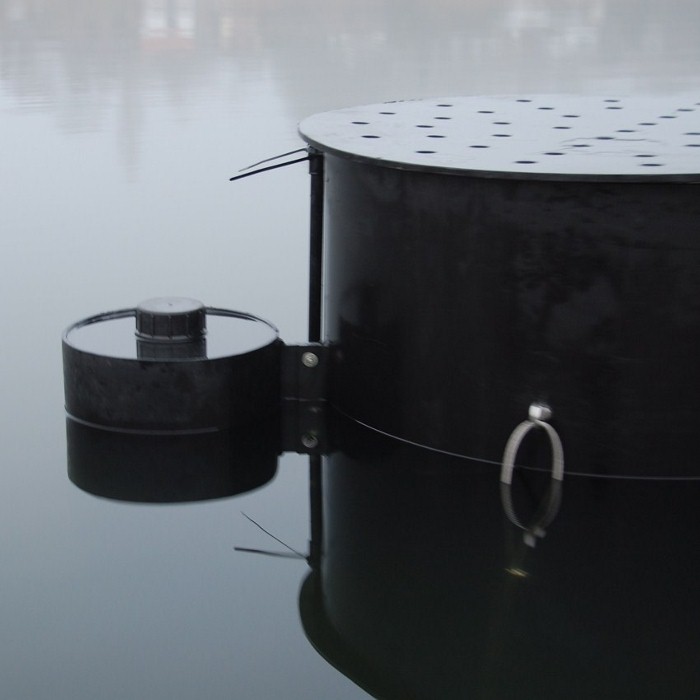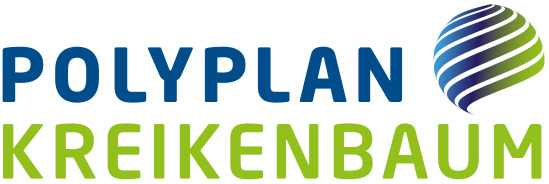Lake Steinbrunner is a small open pit lake (former lignite mine) 3 km away from the center of Steinbrunn (Austria, Burgenland).
Lake data
- Surface area: 5.2 ha
- Lake volume: 500,000 m³
- Volume of the Hypolimnion: 350.000 m³
- Stratification: the lake has a thermocline at 7 m and a halocline at 14 m.
Capacity
- Volumetric flow: 343 m³/h,
- Oxygen input: 40 kg O2/day
- Power consumption: 2.5 kW
Redevelopment Goals
The goal of aeration in Lake Steinbrunn is to restore an oxygen-enriched deep zone that extends down to a depth of at least 15 meters. When the oxygen levels of 4 to 8 mg L-1 can be established in the deoxygenated zone between 8 and 15 m, we can say that we are successful. In the presence of oxygen, internal nutrient accumulation is blocked and the available nutrient pool for the low-light-adapted blue-green algae at the bottom of the euphotic zone is reduced. The remediation concept as well as the subsequent monitoring was carried out by the limnology office DWS Hydro-Ökologie GmbH.
Result
- Oxygen profiles: Based on the isoplots (top right), the temporal development of oxygen enrichment in the area below the chemocline can be very well traced. In 2011, when operational disturbances prevented continuous functioning of the TIBEAN (deep water aeration system)no significant oxygen enrichment could yet be detected in the deep zone. It was not until June 2012, at around 2,500 hours of operation, that oxygen enrichment became clearly visible for the first time. By reaching over 3000 hours of operation in October, there was a massive oxygen enrichment (between 3.5 and nearly 6 mg L-1, 31-52% saturation) in the zone between 8 and 17.5 m water depth. Thus, an important milestone for the successful restoration of the Lake Steinbrunn was accomplished.
- Conductivity: In comparison with other physico-chemical parameters, the conductivity values showed measurable changes already a short time after the start of operation in 2011 (figure below right). The chemocline was in the region of 8.5 m to 9 m in the years 2003 to 2005. The operation of the TIBEAN caused the conductivity values in the Mixolimnion to drop slightly, but below the chemocline they dropped significantly. The gradient, or density difference, subsequently became more prominent, however, erosion of the chemocline had not been observed up to that point. From around autumn 2011, a second chemocline was formed at 17.5 m as a result of the interaction between oxygen influx and the associated precipitation reactions. The long-term effect of continuous oxygenation will be that the conductivity values in the aerated zones will approach the values found in the surface layers. A defined goal of the measure would be that the chemocline at 8.5 m will gradually dissipate. The chemocline at a depth of 18 m was lowered to 25 m in subsequent years by extending the TIBEANriser.
- Phosphorus: In the layer influenced by the deep water aerator, a measurable decrease in phosphorus concentration was already observed in the second year of operation. Prior to the oxidation of the deep layers, total phosphorus concentrations of up to 140 µg L-1 were still measured in the corresponding zone. In contrast, by the end of November 2012, total phosphorus levels were already between 19 and 21 µg L-1 and were noticeably reduced.
- Iron: Under reducing conditions – which were present in the deep waters of Lake Steinbrunn for a long time – significant amounts of iron and manganese can dissolve from the sediment (each up to > 2.7 mg L-1 in October 2010, 10 m depth). In the aerated layer, there was a significant decrease in iron levels (down to an average of 0.14 mg L-1) after successful oxygenation.




